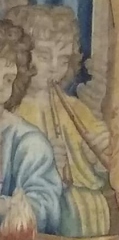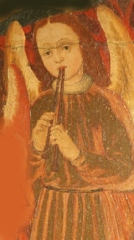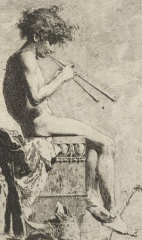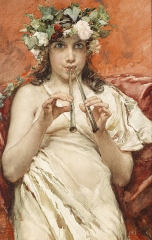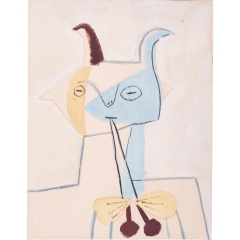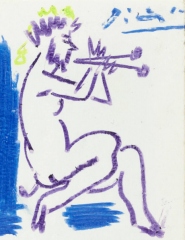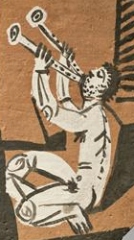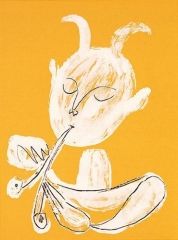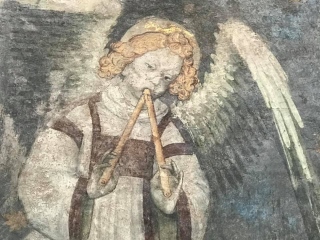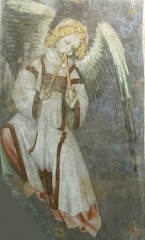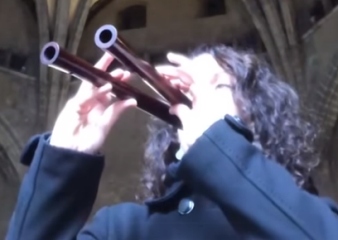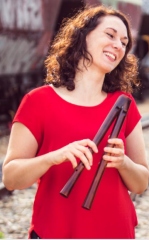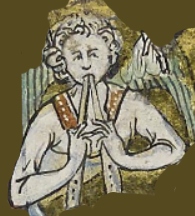Double pipes, or two pipes played at the same time, are found in sculptures, paintings, stained glass, religious manuscripts and archaeology dating back into pre-history, right up to the present day. Sometimes the two pipes are exactly the same; other images show two slightly different shapes, often one playing the tune and the other a drone pipe. These images are drawn from reality as well as fantasy.
It is impossible to see the mouth-piece on some of these images: some may be duct flutes, others may have single or double reeds or be trumpets. If you have information on the mouth-piece of any of these instruments I would be grateful to know.
I have not included images where it is definately not a variety of duct-flute without keys. Around 1810 an English instrument maker, William Bainbridge, patented a keyed double flageolet which consisted of two English flageolets joined together so that the player could harmonise the tunes that s/he played. Flageolets are therefore not included here.

Duct flute in light wood, with a brass ring at the lower end, pierced with 2 channels. Sound generation by 2 bevels,
placed at unequal heights. 6 double play holes (5 + thumb), plus 2 holes in the bottom. Gives a scale of B minor, at A=440 Hz.
unknown origin |
|
|
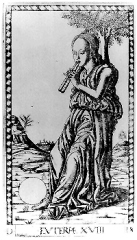 tarot card tarot card |
 21st century 21st century |
| |
|
 early 20th century early 20th century |
| |
|
In all parts of Croatia, double pipes almost regularly had four to five selection holes on the right side, and three to four on the left, while similar ones played in some parts of Bosnia and Herzegovina, and in Serbia they had a reverse arrangement of holes, so on the left side more, and on the right less. Also, none of the doubles from Croatia had holes on the underside, ie facing the player.
[source] |
|
|
 19th c 19th c
former Yugoslavia |
|
|
 20th c djojnica 20th c djojnica
Bosnia |
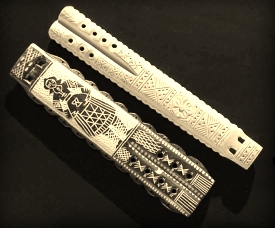 Bosnia Bosnia |
 1960-1970 Balkans 1960-1970 Balkans |
|
 1895 dvojnice Bosnia [Horniman Museum] 1895 dvojnice Bosnia [Horniman Museum] |
|
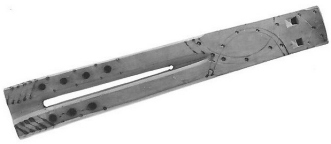 1937 Croatia Dvojnice 1937 Croatia Dvojnice |
 carved Dvojnice carved Dvojnice |
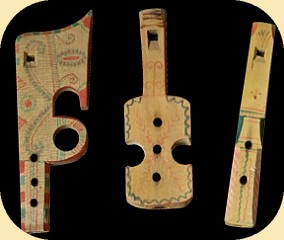 žveglicas,
children's toys Croatia žveglicas,
children's toys Croatia |
 Croatia Croatia |
Dvojnice was played in various variants in all
parts of Croatia, and various names were used
for this instrument: dvojnice, žveglice, diple,
dvogrele, dvojkinje, vidalice, etc.
For more Croatian instruments see the website
of the
Ethnographic Museum of Istria here
and also here. |
|
| |
|
|
|
|
 1960's 1960's |
audio and other examples
from the region |
|
|
| |
|
|
|
|
|
|
| |
|
 1910, Royal Dux, Bohemia 1910, Royal Dux, Bohemia |
|
 1900-1910 Royal Dux, Bohemia 1900-1910 Royal Dux, Bohemia |
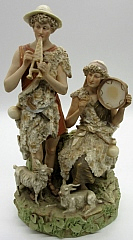 Royal Dux shepherd and shepherdess Royal Dux shepherd and shepherdess |
|
| |
|
 Transylvania and Transdanubia Transylvania and Transdanubia |
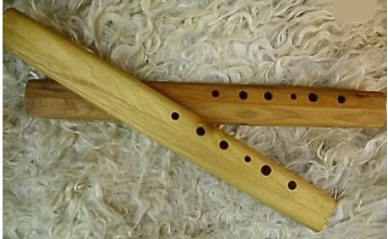 There are 6 sound-producing openings on one side and none on the other.Hungary There are 6 sound-producing openings on one side and none on the other.Hungary |
|
|
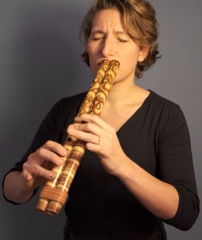 2021
Veronika Vitazkova 2021
Veronika Vitazkova
|
dvojačka, also called dvojačky
A combination of a 6-hole shepherd’s
flute with an overtone flute. A player
blows simultaneously to both pipes,
one of them having a function of a
melodic pipe, the other playing a
constant drone |
. |
|
 19th century carved from one piece of wood 19th century carved from one piece of wood |
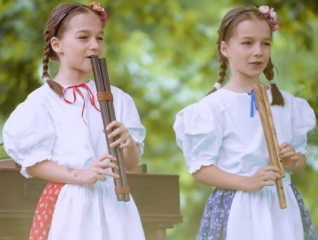 children children |
|
|
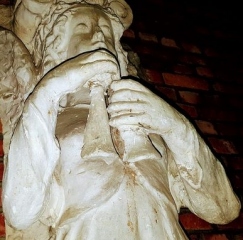 Leuven University library, Belgium Leuven University library, Belgium |
|
|
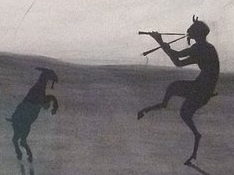 20th century fantasy art 20th century fantasy art |
|
|
|
|
The Stenlundapipa is a refinement of the double flute in which the tone of the drone pipe can be varied. The flute comprises two pipes in one unit, both of which are tuned in a major key. One of the pipes is equipped with small corks that can be used to close the desired number of finger holes. It is made in three different sizes: C, A, and G. |
 |
|
|
 player player |
|
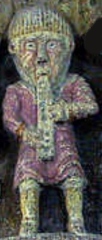 Auvergne Auvergne |
|
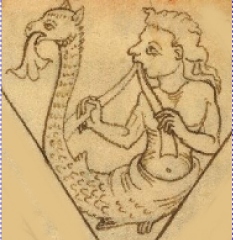 1180 Northern France, double horn 1180 Northern France, double horn |
| 12th century carvingx on 'The Musicians Pillar' church of Bourbon-l'Archambault |
 12th century 12th century
stone carving on capital |
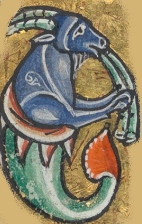 1185 France 1185 France |
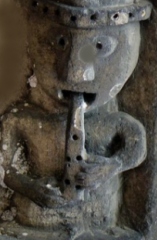 12th century Picardy 12th century Picardy |
|
|
|
|
|
|
|
 France France |
 France France |
|
 1930's Georges Maxim figurines 1930's Georges Maxim figurines |
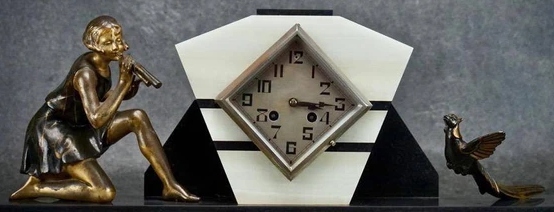 |
|
|
|
|
|
|
|
|
|
|
|
|
|
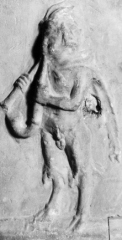 1st century Roman 1st century Roman |
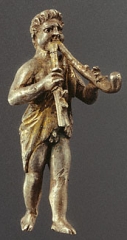 150-200AD Roman 150-200AD Roman
statuette |
|
 150 CE on side of 150 CE on side of
marble funerary urn |
|
 Sardinia Sardinia |
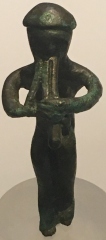 Sardinia Sardinia |
|
|
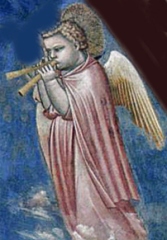 1306 fresco, Padua 1306 fresco, Padua |
 1312 painting Martini 1312 painting Martini |
 1338 religious painting 1338 religious painting |
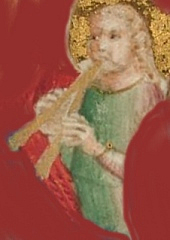 14th century Naples 14th century Naples |
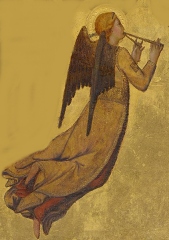 1340 painting Siena 1340 painting Siena |
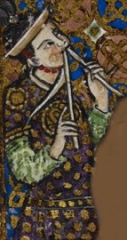 1340 miniature Genoa, Italy, 1340 miniature Genoa, Italy, |
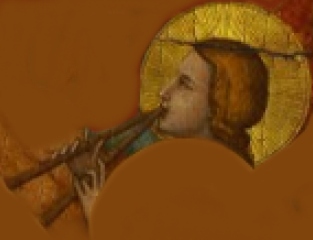 1340 painting, Florence, Italy 1340 painting, Florence, Italy |
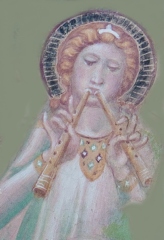 1370 fresco, Siena 1370 fresco, Siena
[possibly reeded instruments] |
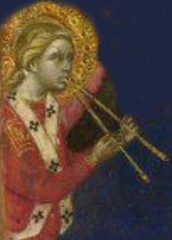 1374 Genoa, Italy 1374 Genoa, Italy |
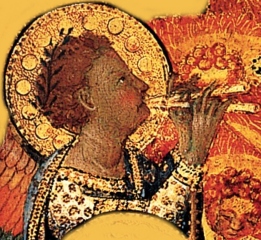 1380 altarpiece Siena 1380 altarpiece Siena |
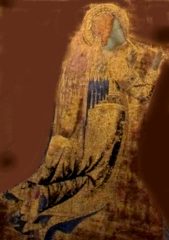 angel painting angel painting |
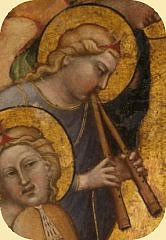 1395 by Aretino 1395 by Aretino |
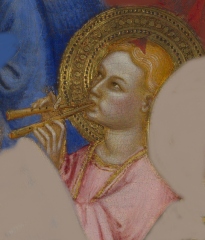 14th century Florence 14th century Florence |
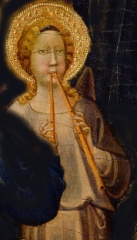 1410 1410 |
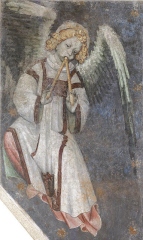 1415 fresco fragment, Turin, Italy 1415 fresco fragment, Turin, Italy |
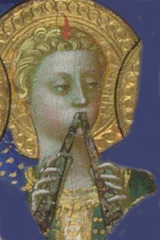 1424 Florence 1424 Florence |
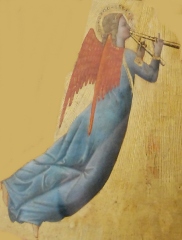 early 15th century Siena, Italy early 15th century Siena, Italy |
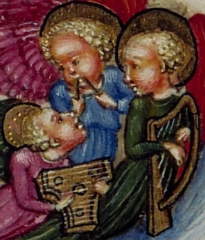 1430 manuscript, Milan 1430 manuscript, Milan |
|
 1447-50 Donatello 1447-50 Donatello |
|
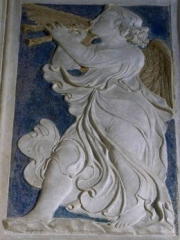 1449-1456 Bas-relief angel painted limestone 1449-1456 Bas-relief angel painted limestone |
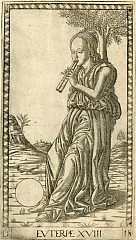 1465 tarot card 1465 tarot card |
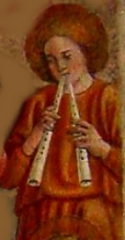 1468 Spechi Abbey, Rome 1468 Spechi Abbey, Rome |
|
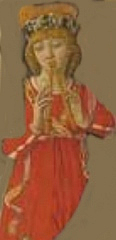 1474 altarpiece, Asciano 1474 altarpiece, Asciano |
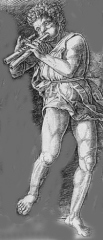 1470's Italy [possibly double reed 1470's Italy [possibly double reed
with circular breathing] |
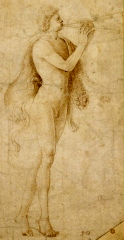 1490 1490 |
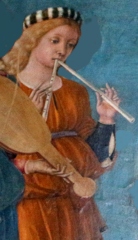 1491 Tuscany 1491 Tuscany |
 1495Abatellis Palace 1495Abatellis Palace
Palermo, Sicily |
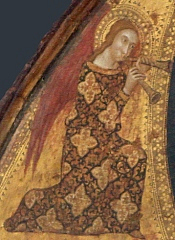 15th century Abatellis Palace 15th century Abatellis Palace
Palermo, Sicily |
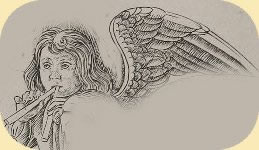 1485-95 Florence, print 1485-95 Florence, print |
|
|
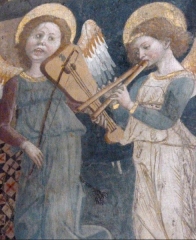 15th century Atri Cathedral, Abruzzo 15th century Atri Cathedral, Abruzzo |
|
15th century: the upper
triangle
of the
episcopal
throne in Orvieto Cathedral;
includes an angel
on a double flute |
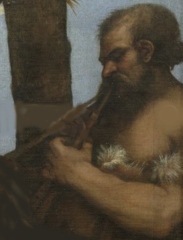 1511 1511 |
|
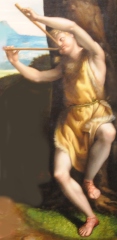 1526 painting, Ferrara 1526 painting, Ferrara |
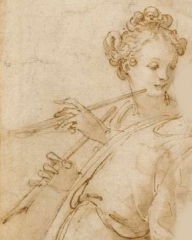 16th century
drawing 16th century
drawing
© The Fitzwilliam Museum |
|
 1722 Milan, Italy Anciuti workshop 1722 Milan, Italy Anciuti workshop |
 flute d'accord with key [Venice] flute d'accord with key [Venice] |
|
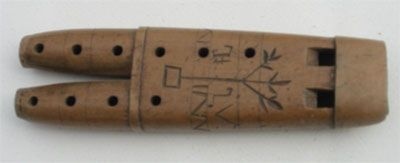 unknown, possibly southern Italy unknown, possibly southern Italy |
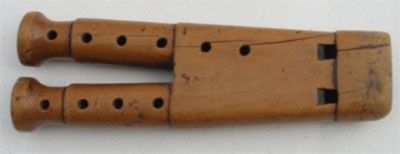 unknown, possibly southern Italy unknown, possibly southern Italy |
|
 Benevento Italy Benevento Italy |
 11th/12th century 11th/12th century
San Pedro de Ansemil, Spain |
|
|
|
|
|
|
|
|
|
|
| |
|
|

 1895 dvojnice Bosnia [Horniman Museum]
1895 dvojnice Bosnia [Horniman Museum]  1937 Croatia Dvojnice
1937 Croatia Dvojnice  carved Dvojnice
carved Dvojnice  1960's
1960's 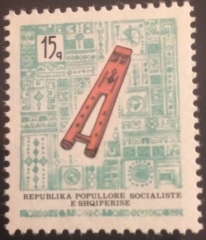 1978 stamp
1978 stamp 1910, Royal Dux, Bohemia
1910, Royal Dux, Bohemia  1900-1910 Royal Dux, Bohemia
1900-1910 Royal Dux, Bohemia Royal Dux shepherd and shepherdess
Royal Dux shepherd and shepherdess  2021
Veronika Vitazkova
2021
Veronika Vitazkova
 19th century carved from one piece of wood
19th century carved from one piece of wood  children
children 1338-1344 Tournai, Belgium
1338-1344 Tournai, Belgium  Leuven University library, Belgium
Leuven University library, Belgium 20th century fantasy art
20th century fantasy art player
player France
France 1722 Milan, Italy Anciuti workshop
1722 Milan, Italy Anciuti workshop  flute d'accord with key [Venice]
flute d'accord with key [Venice] 
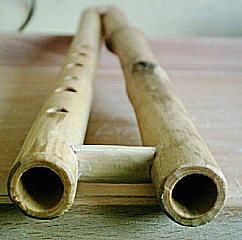

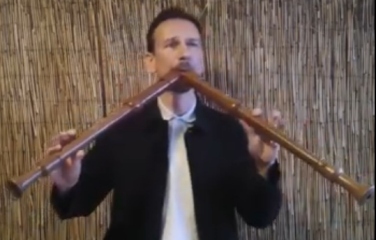 2015 video by Soboku Music
2015 video by Soboku Music Victorian tiles not known
Victorian tiles not known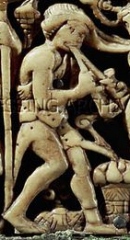 Ivory plaque unknown
Ivory plaque unknown 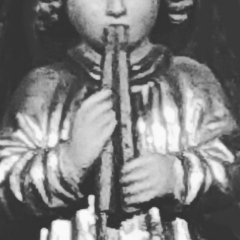 unknown
unknown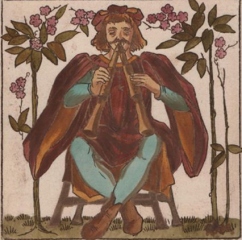 unknown double pipes
unknown double pipes 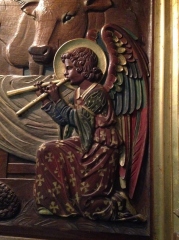 unknown
unknown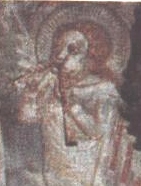 medieval angel
medieval angel 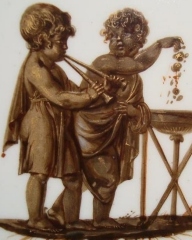 unknown
unknown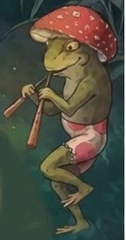 early 20th century children's
early 20th century children's 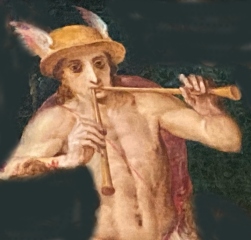 unknown
unknown
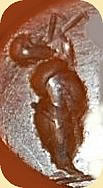
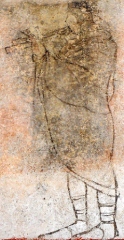
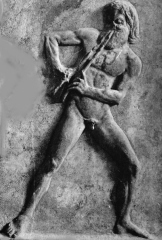
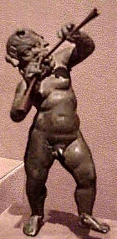
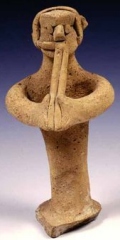


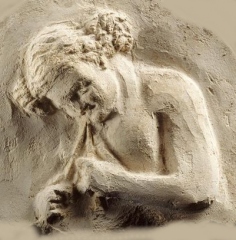







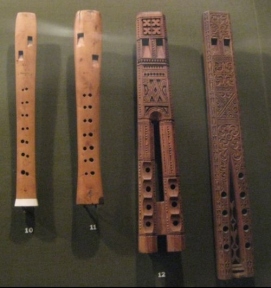
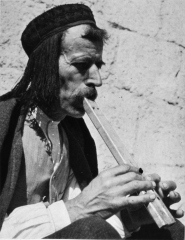
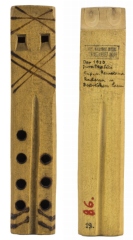


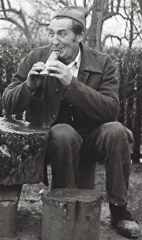


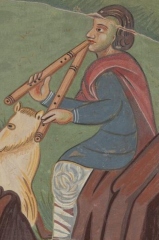




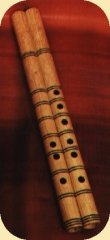
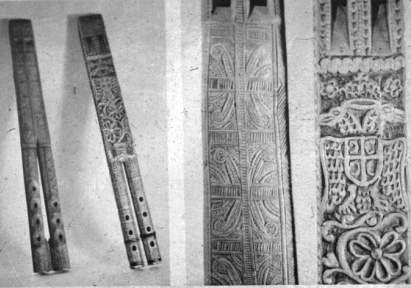
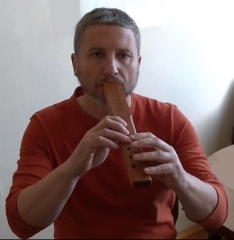

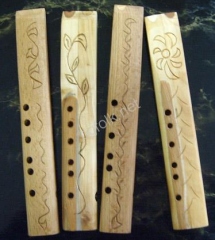
 made by
made by 
 There are 6 sound-producing openings on one side and none on the other.
There are 6 sound-producing openings on one side and none on the other.

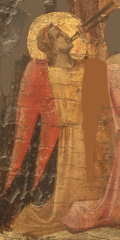
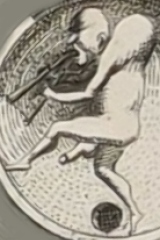
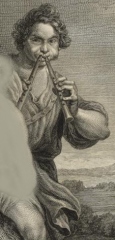
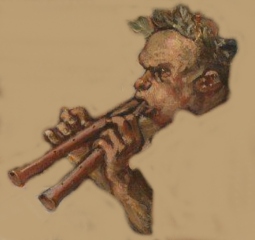
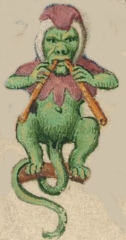

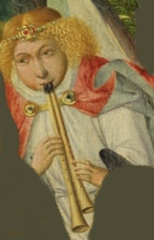
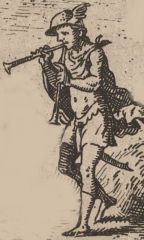
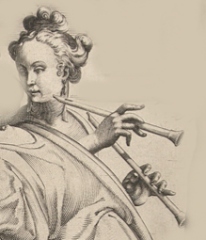
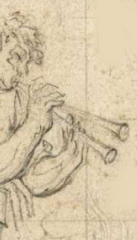

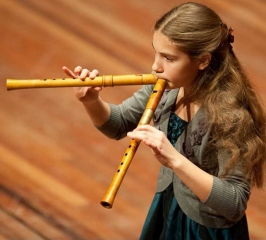






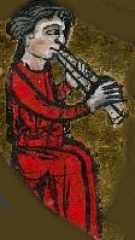
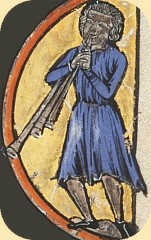



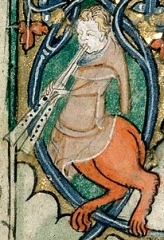
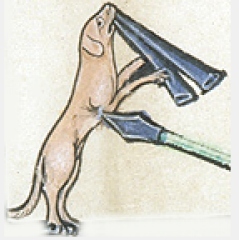
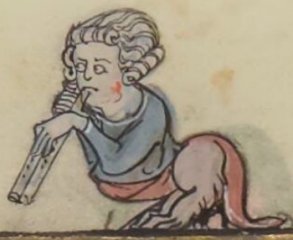
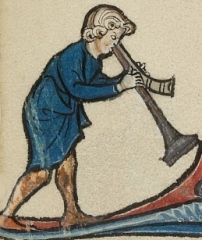
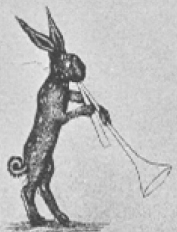
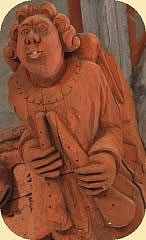
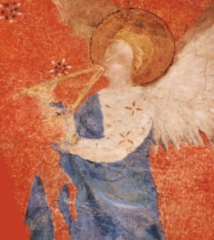
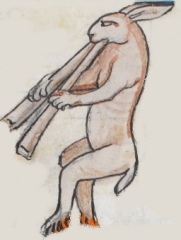

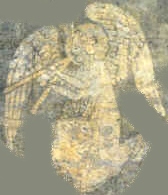
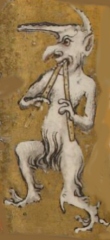

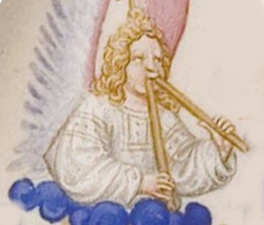
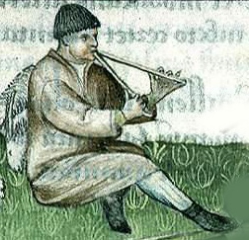
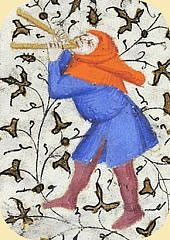
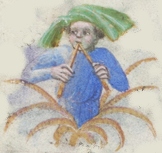
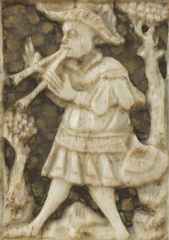
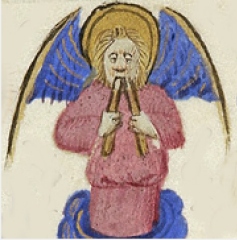
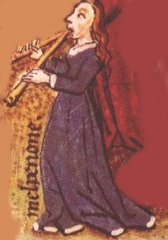
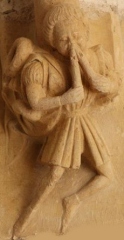
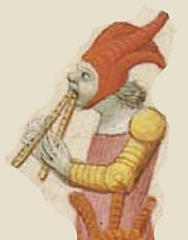
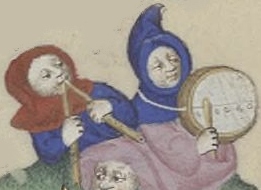
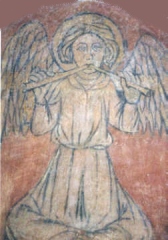
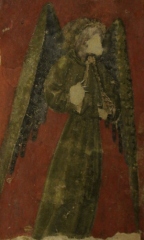
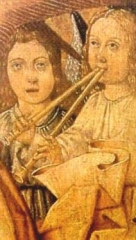
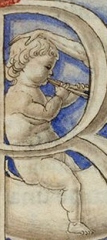
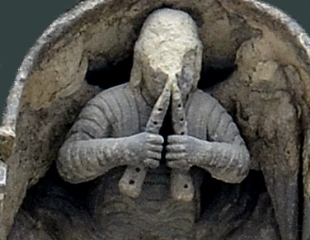
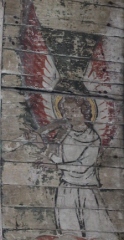

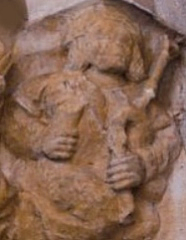
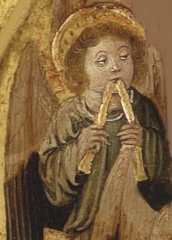
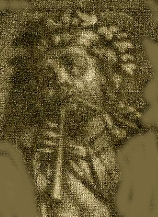
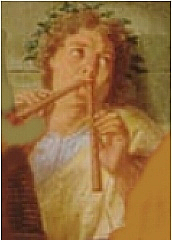

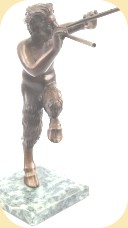



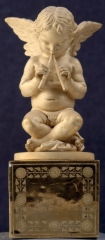
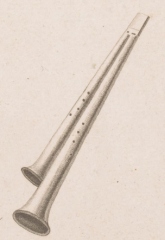
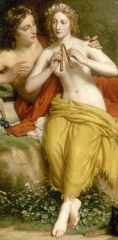
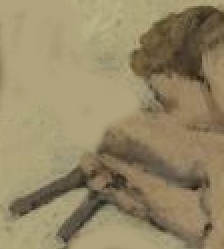



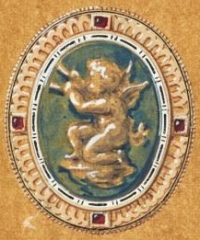



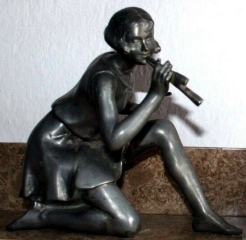
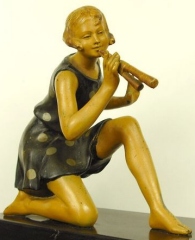
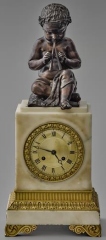

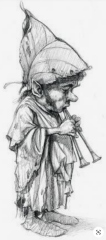

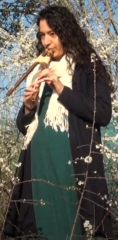
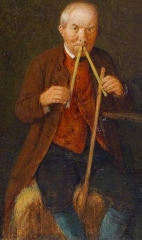
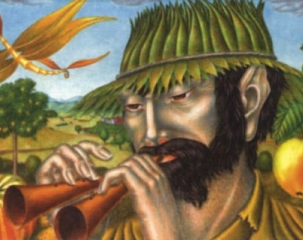
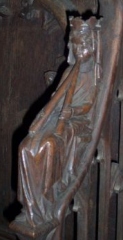

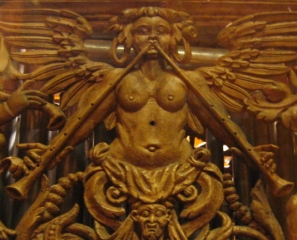
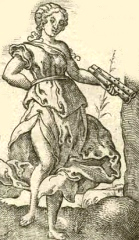
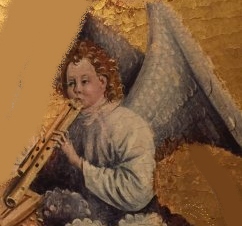
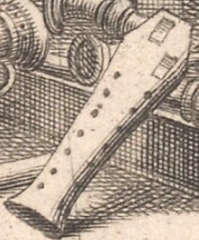
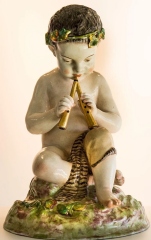
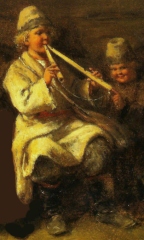
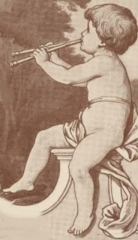

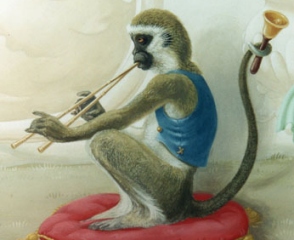
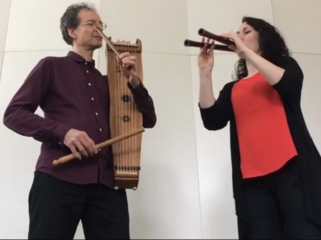
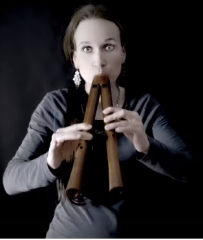
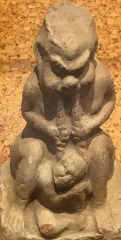

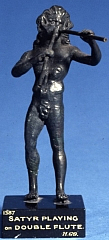
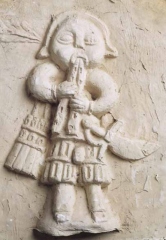







 1338
1338 





 1380
1380 











 1468 Spechi Abbey,
1468 Spechi Abbey, 
 1470's
1470's











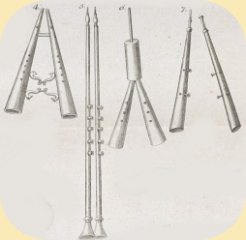
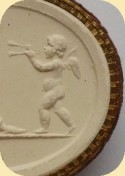

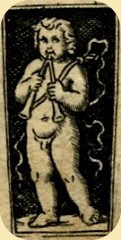
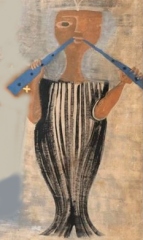
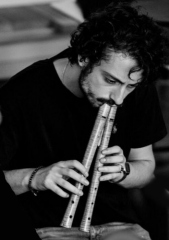
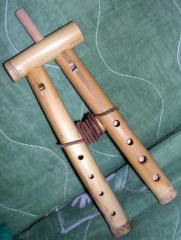




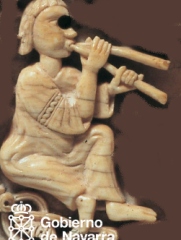 1005
1005 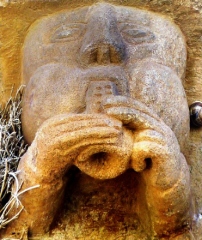


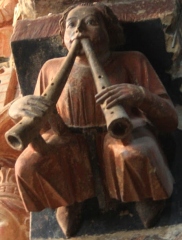
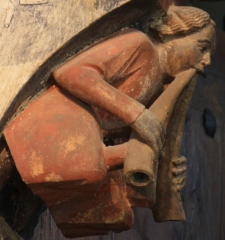
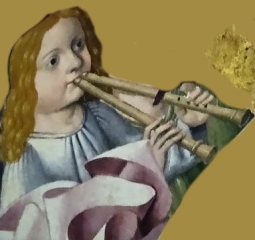
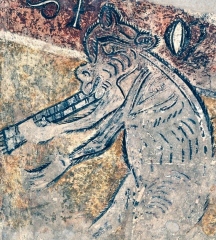

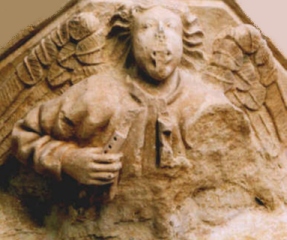

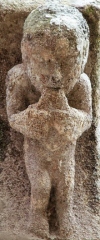
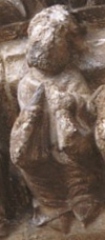
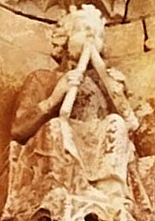
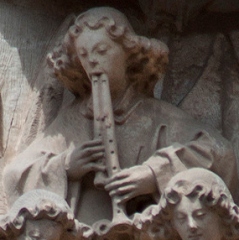
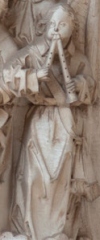
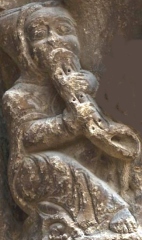
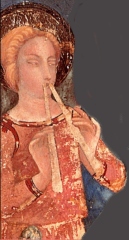

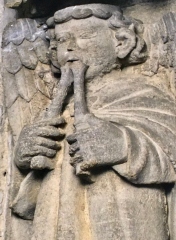
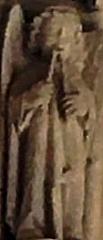
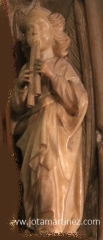 1441
1441 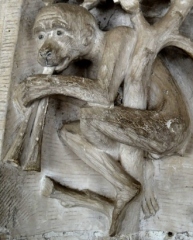
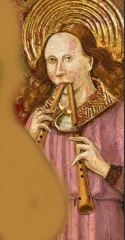
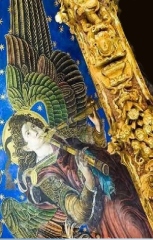 15th century
15th century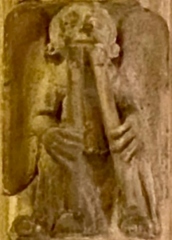
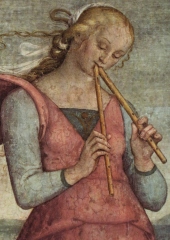 15/16th century
15/16th century 
